Could these contact center horror stories have been avoided?

Content Writer
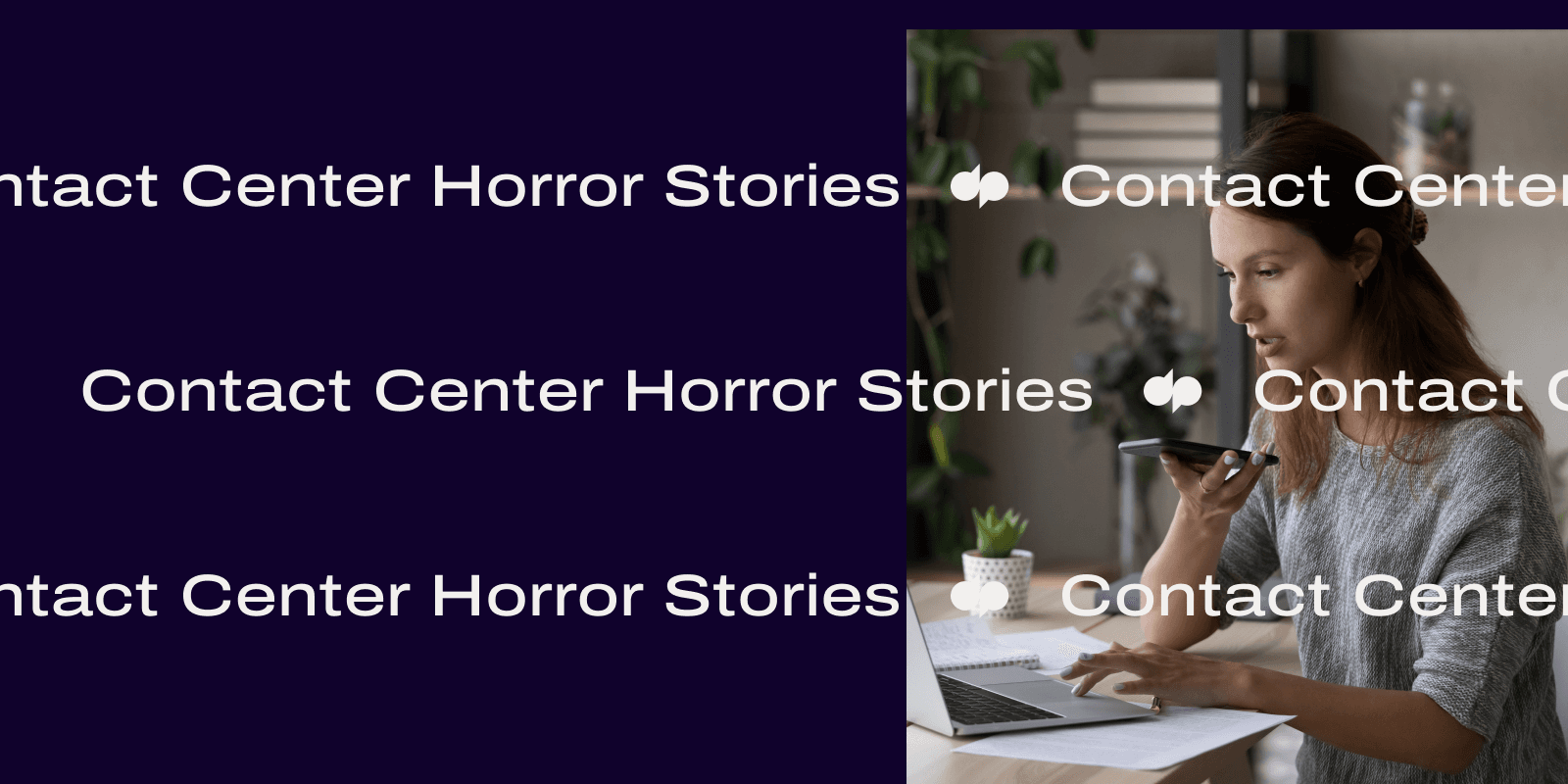
Tags
Share
Is there anything people dread more than calling customer support? For a service designed to be a source of help, contact centers often have a reputation for being lengthy, frustrating, and full of hoops to jump through.
But these days, that doesn’t have to be the case. In fact, contact center technology has reached the point where getting customer support can (and should) be a quick and painless experience.
So how can the right technology make even the worst contact center experiences better? We’ve collected some of the most terrifying of contact center horror stories Reddit and Quora have to offer, and looked at how they could’ve been less painful—for both the customers and agents.
3 common contact center horror stories
1. A million menus leading to the wrong person
Our first horror story comes from the thread “What’s the worst customer service you’ve ever experienced?” TheUgniux shared this harrowing tale:

On the same thread, Bananus01 shared a similar story:
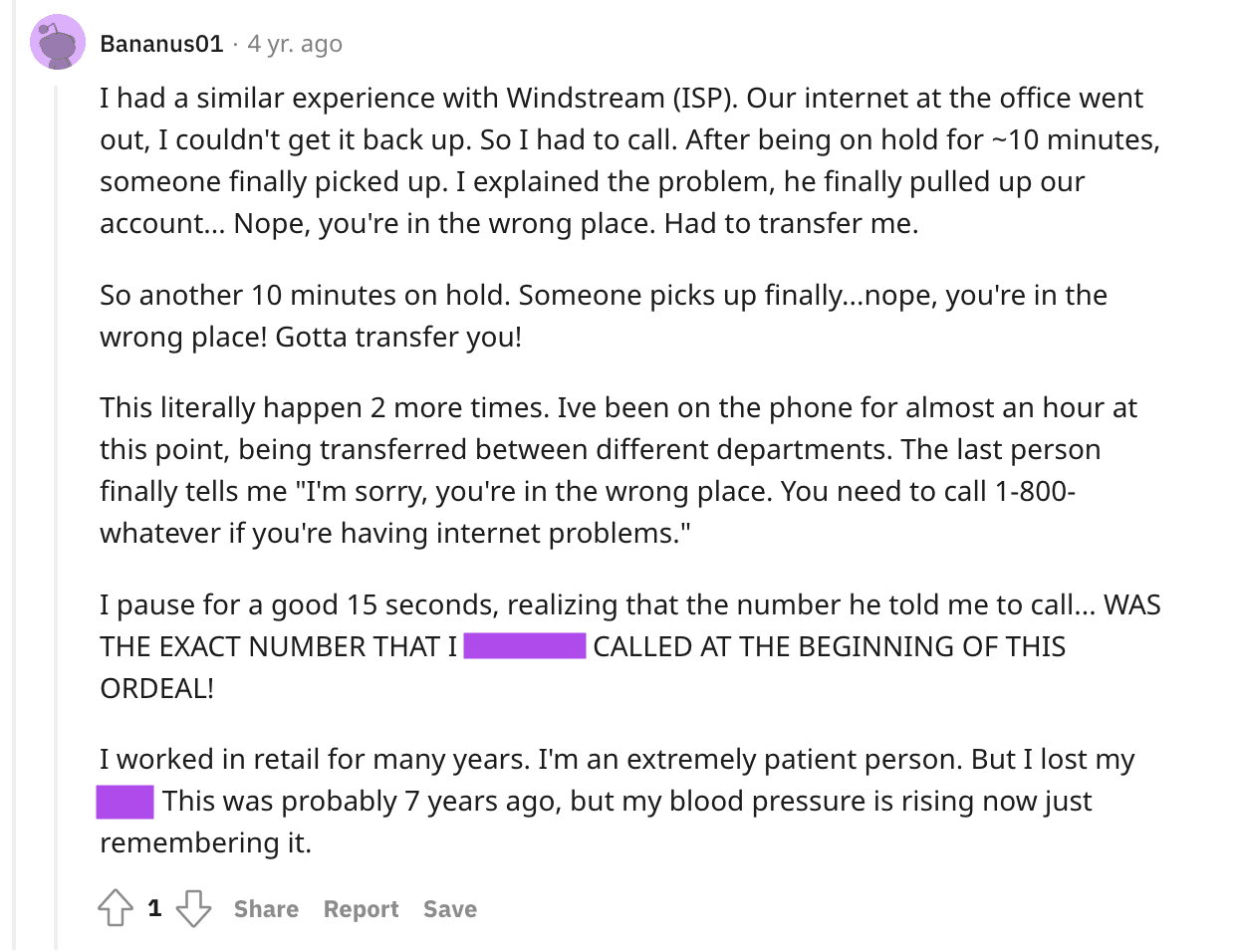
If this experience sounds familiar, you’re not alone. (Even this writer has a similar story from a healthcare-related call.) And the root of the problem here can be summed up in one word: routing.
Without proper call routing, the callers kept getting bounced from number to number, trying to find the right person to speak to. What if, instead, the call routing could use interactive voice response (IVR) to identify the caller’s question and direct them to the right department or agent?
For instance, if these companies used Dialpad, they could’ve set up call routing for each department to make sure that the caller reaches the right place. It can even send them to agents based on skill level, availability, or whichever routing options they set up:
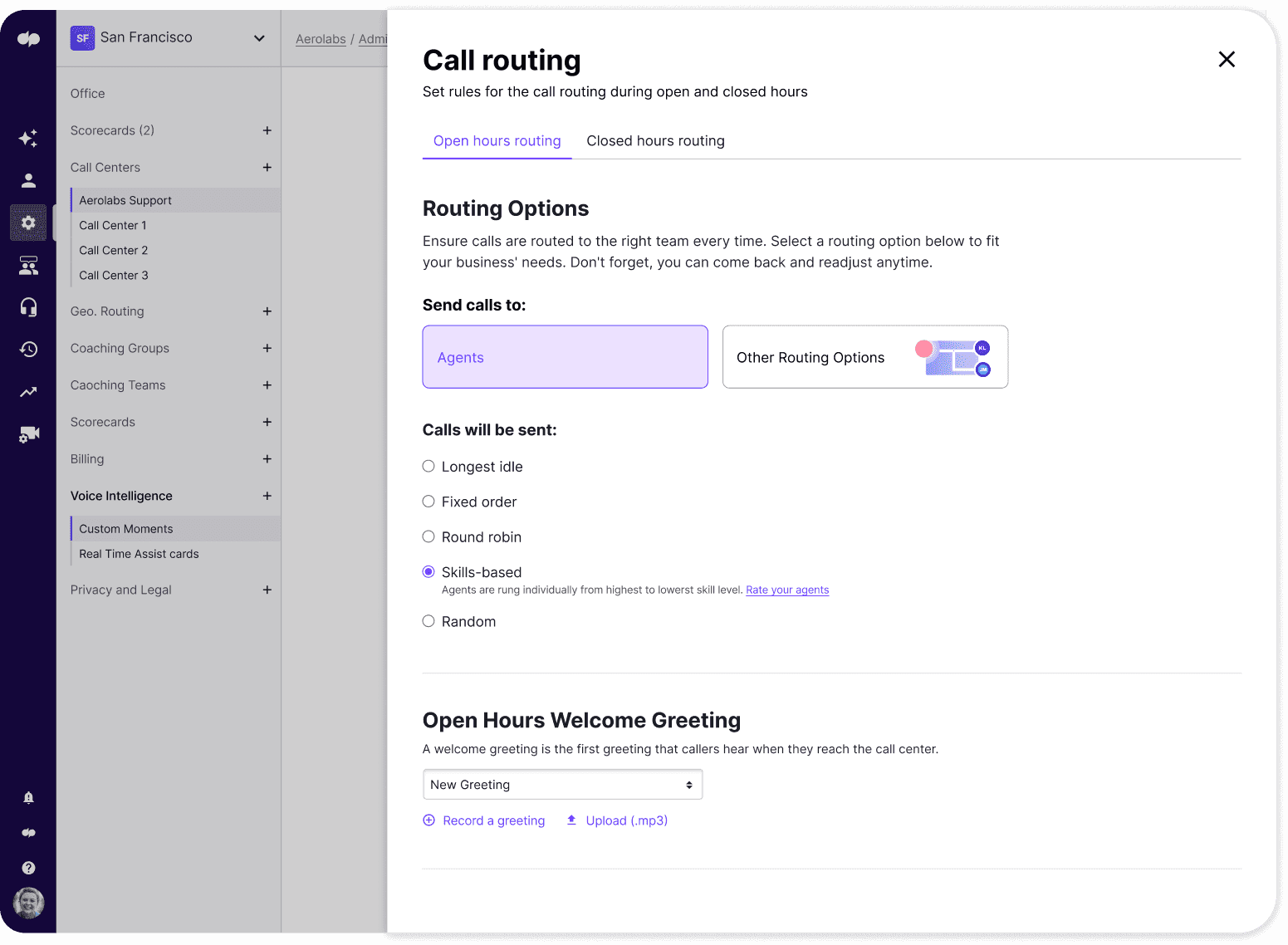
In fact, setting up proper routing and fallback options could have also saved the callers time spent waiting, as it would make sure they’d get to an available agent more quickly. And if the IVR menu includes self service options, it could cut time even more by helping callers who have simple questions without them even needing to speak to an agent.
Now, what about the caller who had to repeat their information over and over each time they got transferred? That could have all been avoided with a proper CRM (customer relationship management) platform integrated with their contact center. For instance, by integrating Dialpad with their CRM, they could automatically log calls and capture key information, so the next person to take the call can see the context around those past conversations:
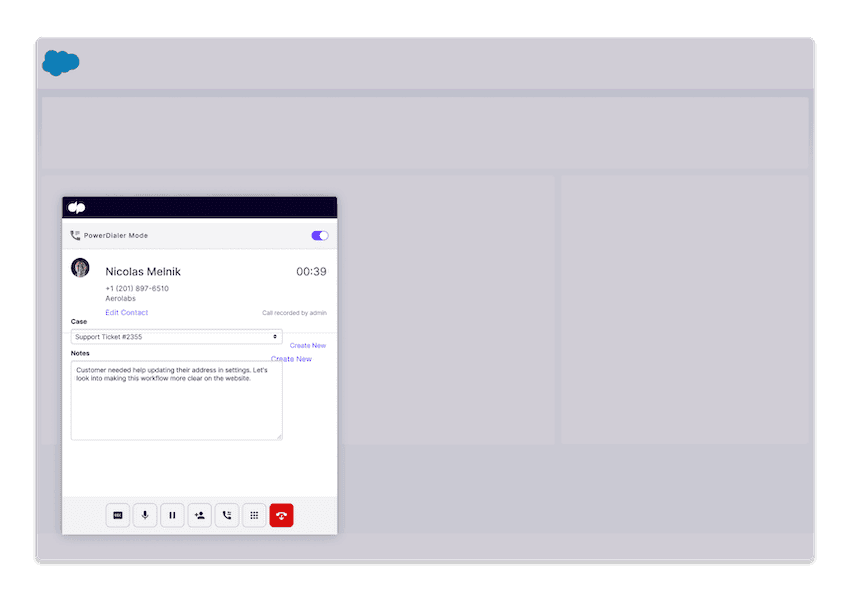
In other words: if those contact centers had used a good contact center platform, the callers would have reached the right department the first time, spent less time waiting, and had all their information logged for easy reference should they need to speak with anyone else.
(Although how someone called one bank and wound up speaking to an agent from another remains a mystery.)
2. Nothing past the script
Our next story is the tale of an outsourced contact center with no instructions past the scripted troubleshooting. On this thread, Redditor stylz168 recounts an instance where the only thing slower than the internet connection was the customer support.
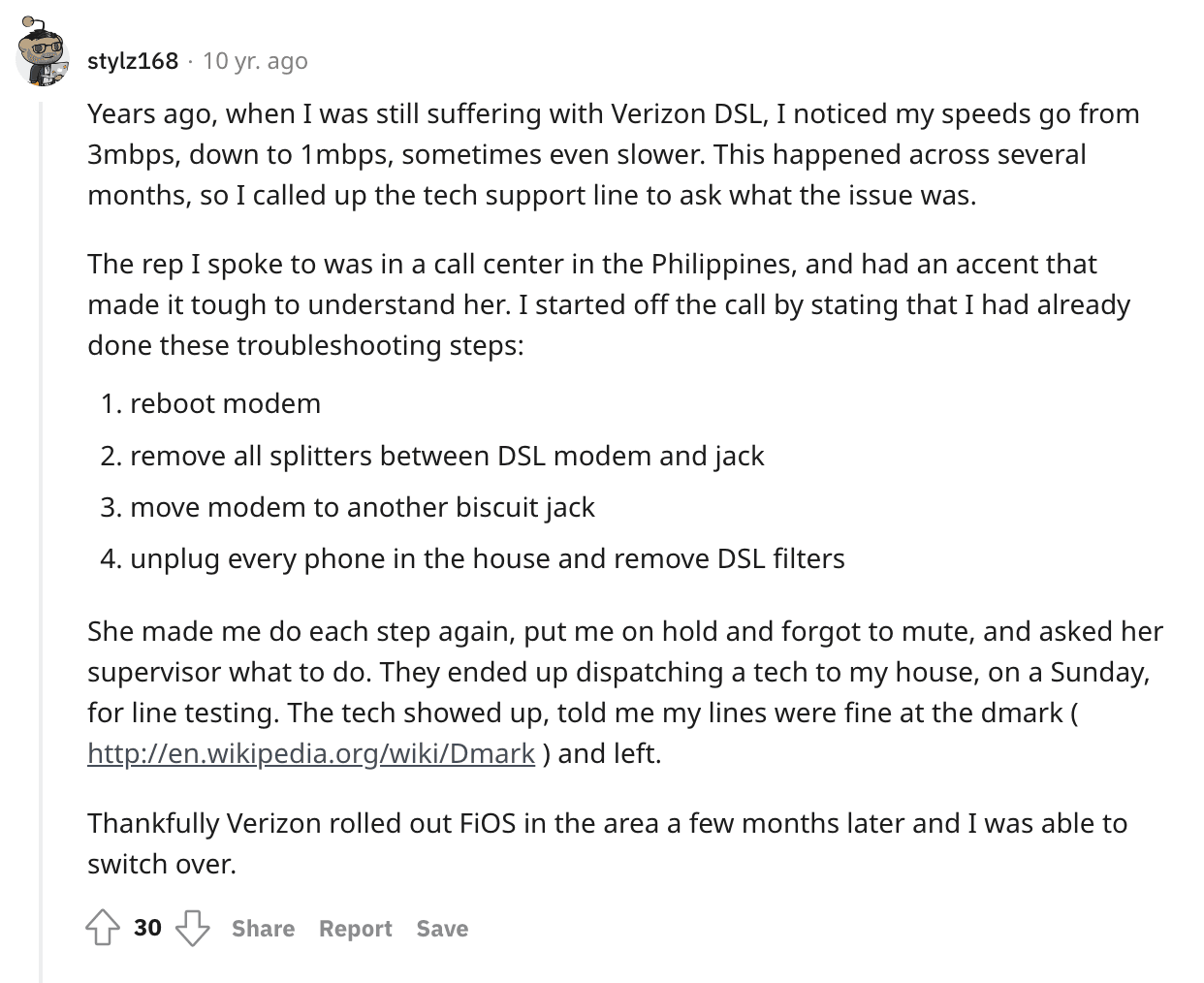
In this case, it’s clear that the contact center agent wasn’t trained on anything past the initial script. That is, of course, a problem, but what if the agent could still receive coaching and assistance during the call itself?
For that, they’d want something like call pops or Dialpad’s Real-Time Assist (RTA) cards. How they work: supervisors can create RTA cards with tailored notes on different topics and set them to trigger automatically on agents’ screens when those keywords are spoken.
For example, we can set up an RTA card about how Dialpad’s phone number porting process works and set that to pop up whenever “porting” or “port a number” is spoken on a call:
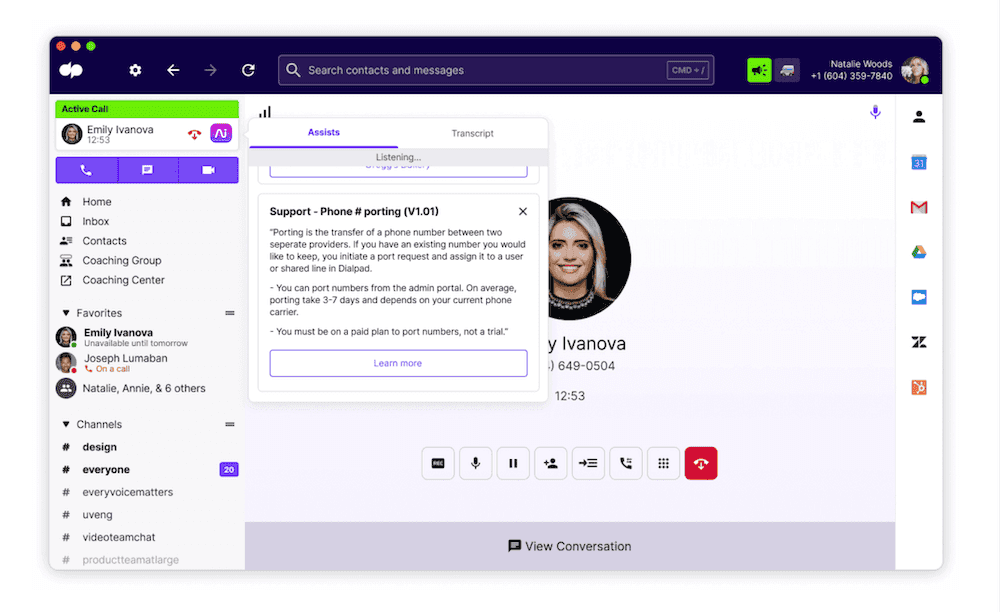
In this case, the agent could’ve immediately gotten the information she needed without having to put the caller on hold and check with her manager, and might have even been able to help without needing to send over a tech on a Sunday.
What about the supervisor? Well, with Dialpad Support’s admin dashboard, the supervisor could see the call transcribed in real-time, along with sentiment analysis—a visual indicator that the caller was getting frustrated. From there, the supervisor could listen in on the call, message the agent, or even barge the call:

In either case, it would have made the call a lot easier for the agent, supervisor, and customer.
3. A single (frustrating) channel
Over on Quora, a user wondered “What’s the worst customer service experience you’ve ever had?” One user replied with a tale where the contact center and the customer service both had room to improve:
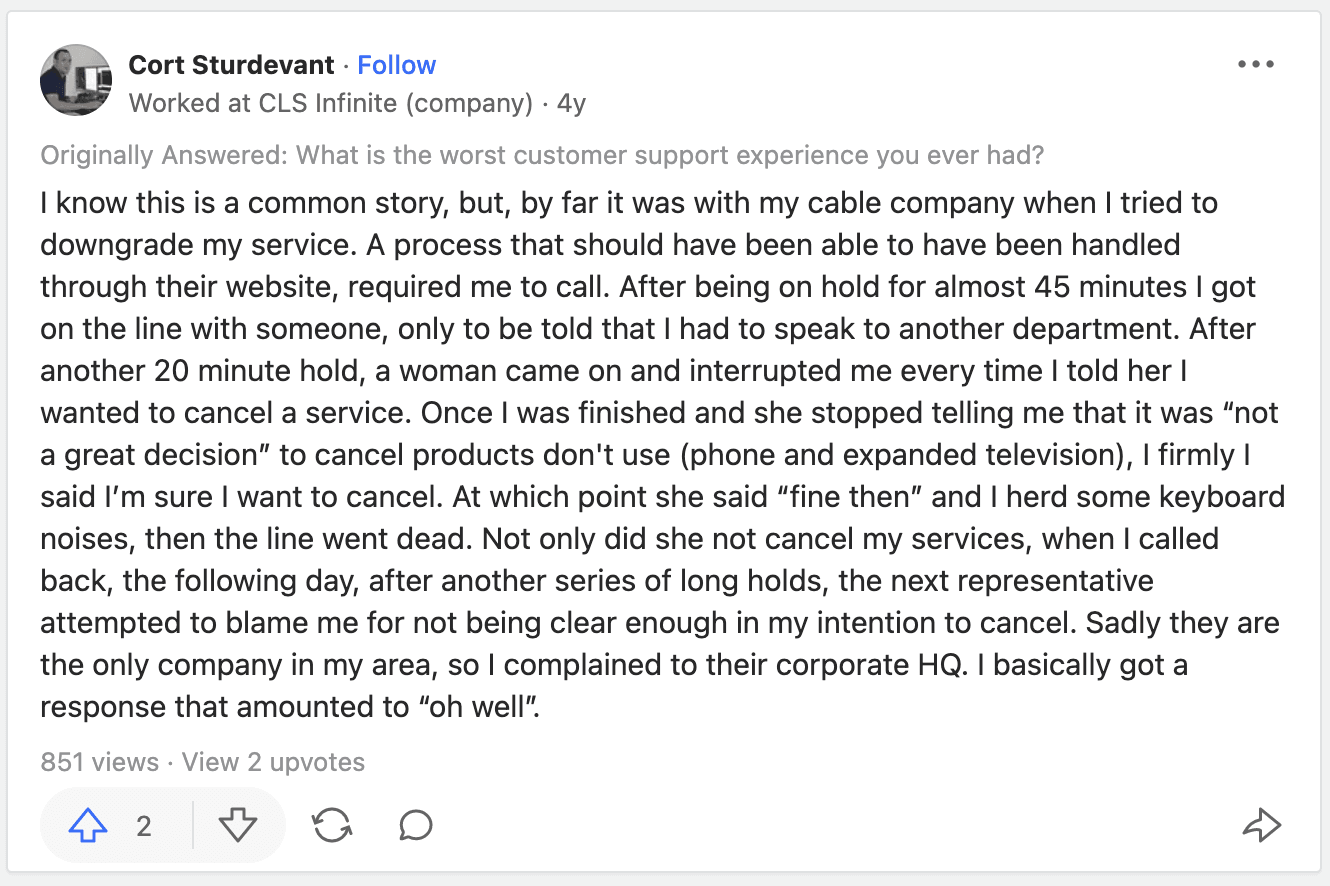
There are a lot of things that would have helped here, but these problems could have been avoided with omnichannel customer service.
The customer wanted to handle everything through the cable company’s website, but it wasn’t an option. This is a great example of how organizations should be available on the channel their customers prefer.
Some customers like to contact companies by phone. Others prefer email. Some like web chat, or social media, or text messaging—and businesses should be prepared to meet their customers on that channel. Imagine how much easier it would have been for this customer if he could have handled everything from the website, especially if it had a chat he could have used to communicate with an agent there.
It’s a whole lot better than being tossed between departments and waiting on hold for an hour.
Lessons learned
While there’s no going back in time and preventing these horror stories from happening, we can treat them as valuable learning experiences for contact centers. All the issues that the posts raised are common complaints across industries, but there are tools out there to address each and every one of them.
Whether it’s:
Reducing call center call avoidance by using AI to route calls to the right agents and giving agents the training and live on-call coaching they need
CRM integrations to keep customer information consistent across calls
Omnichannel contact centers so customers can reach agents on the channels they prefer
We have the technology to help. Reaching out to a contact center doesn’t have to be a frustrating experience anymore.
Ready to make calling your contact center a great experience?
Get a demo of Dialpad Support and see it in action!
